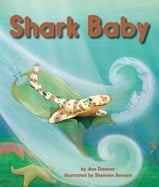Alignment to Standards for MD

| Grade | Number | Standard |
|---|---|---|
| 1 | SC-1.3.0.A.1. | Compare and explain how external features of plants and animals help them survive in different environments. |
| 1 | SC-1.3.0.A.1.b | Compare similar features in some animals and plants and explain how each of these enables the organism to satisfy basic needs. |
| 1 | SC-1.3.0.A.1.c | an organisms external features contribute to its ability to survive in an environment. |
| 1 | SC-1.3.0.C.2. | Recognize that all living things have offspring, usually with two parents involved. |
| 1 | SC-1.3.0.C.2.a | Examine a variety of living things and their offspring and describe what each parent and offspring looks like. |
| 1 | SC-1.3.0.E.1. | Describe some of the ways in which animals depend on plants and on each other. |
| 1 | SS-1.3.0.B.1.a | Identify and describe physical characteristics of a place (physical features, climate, vegetation and animal life) |
| 2 | SC-2.3.0.C.1. | Explain that there are identifiable stages in the life cycles (growth, reproduction, and death) of plants and animals. |
| 2 | SC-2.3.0.C.1.c | Given pictures of stages in the life cycle of a plant or an animal, determine the sequence of the stages in the life cycle. |
| 2 | SC-2.3.0.C.1.d | Provide examples, using observations and information from readings that life cycles differ from species to species. |
| 2 | SC-2.3.0.F.1. | Explain that organisms can grow and survive in many very different habitats. |
| 2 | SC-2.3.0.F.1.a | Investigate a variety of familiar and unfamiliar habitats and describe how animals and plants found there maintain their lives and survive to reproduce. |
| 4 | SC-4.3.0.A.1.a | a variety of animals or plants in both familiar and unfamiliar environments. |
| 4 | SC-4.3.0.D.1.a | Describe ways in which organisms in one habitat differ from those in another habitat and consider how these differences help them survive and reproduce. |
| 4 | SC-4.3.0.F.1.a | Explain ways that individuals and groups of organisms interact with each other and their environment. |
| 4 | SC-4.3.0.F.1c | Identify and describe the interactions of organisms present in a habitat: Beneficial interactions: nesting, pollination, seed dispersal, oysters filtering as in the Chesapeake Bay, etc. |
| K | SC-K.3.0.A.1.a | features (observable parts) of animals and plants that make some of them alike in the way they look and the things they do. |
| K | SC-K.3.0.A.1.b | features that make some animals and some plants very different from one another. |
| K | SC-K.3.0.A.1.d | Compare ideas about how the features of animals and plants affect what these animals are able to do. |
| K | SC-K.3.0.A.2.c | similarities in what both humans and other animals are able to do because they possess certain external features. |
| K | SC-K.3.0.C.1. | Observe, describe and compare the life cycles of different kinds of animals and plants. |
| K | SC-K.3.0.C.1.a | Identify and draw pictures that show what an animal (egg to frog) and a plant (seed to tree) looks like at each stage of its life cycle. |
| K | SC-K.3.0.C.1.b | Describe and compare the changes that occur in the life cycle of two different animals, such as a frog and a puppy and two different plants, such as a rosebush and a maple tree. |
| K | SC-K.3.0.D.1. | living things are found almost everywhere in the world and that there are somewhat different kinds of living things in different places. |
| K | SC-K.3.0.E.1. | Develop an awareness of the relationship of features of living things and their ability to satisfy basic needs that support their growth and survival. |
| K | SC-K.3.0.F.1.a | Describe observations of the place and some of the living things found there. |
| K | SC-K.3.0.F.1.c | Describe ways that animals and plants found in each place interact with each other and with their environment. |
| PK | SC-PK.3.0.A.1.a | how some animals are alike in the way they look and in the things they do. |
| PK | SC-PK.3.0.A.1.d | Identify some of the things that all animals do, such as eat, move around and explain how their features (observable parts) help them do these things. |
| PK | SS-PK-3.6.0.E.1.a | Distinguish factual from fictional information (anthropomorphic) |